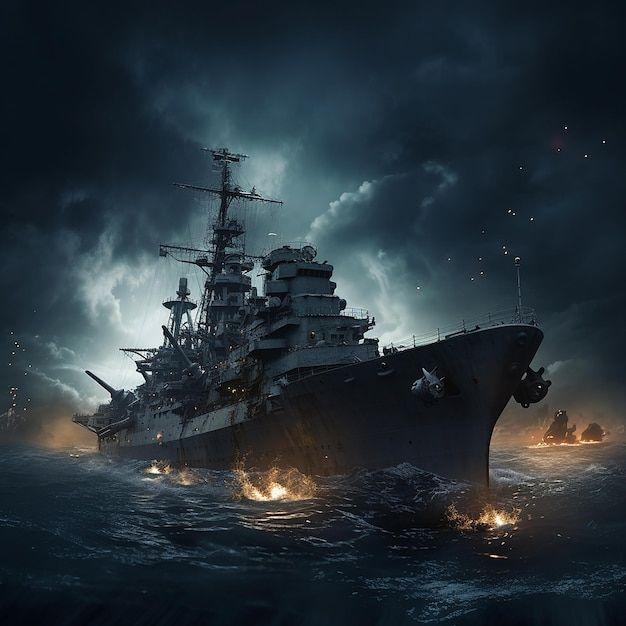As we venture into 2025, the global military landscape is rapidly evolving, with naval forces playing a pivotal role in international security and power dynamics. The United States Navy, alongside other major world powers, continues to evolve its strategies, technologies, and international partnerships to address emerging threats and opportunities. For military enthusiasts, analysts, and defense experts, understanding the current affairs surrounding naval forces is crucial to stay ahead in an increasingly complex world. This article delves into the 10 most essential navy current affairs shaping 2025, highlighting key advancements, strategic shifts, and global challenges that are likely to define naval operations in the coming year.
1. The Rise of Autonomous Naval Systems
The trend toward integrating artificial intelligence and robotics in naval operations is accelerating in 2025. Autonomous ships, drones, and underwater vehicles are becoming a game-changer, reducing human risk while increasing operational efficiency. With nations like the U.S., China, and Russia investing heavily in autonomous naval technologies, 2025 will witness the widespread deployment of unmanned vessels, enhancing surveillance, reconnaissance, and tactical operations.
2. China's Expanding Naval Power
In 2025, China's navy continues its rapid expansion and modernization, cementing its position as a global maritime force. Beijing's ambitious "Made in China 2025" initiative includes state-of-the-art warships, aircraft carriers, and missile systems, challenging U.S. naval dominance in the Indo-Pacific region. The ongoing naval arms race between the U.S. and China is set to intensify as both countries vie for control over the strategic waters of the South China Sea and beyond.
3. NATO’s Enhanced Maritime Strategy
As global security dynamics shift, NATO is revamping its maritime strategy to address emerging threats in the Arctic, Mediterranean, and beyond. In 2025, NATO’s focus will be on strengthening its naval deterrence capabilities, increasing cooperation between member states, and enhancing interoperability. Key upgrades to the alliance's naval forces will help counter growing threats from state and non-state actors in critical maritime chokepoints.
4. Cybersecurity Threats to Naval Forces
In 2025, naval forces around the world will face growing threats in the cyber domain. With sophisticated cyber-attacks targeting naval communication systems, critical infrastructure, and weaponry, cybersecurity will become an essential part of naval strategy. The U.S. Navy, in particular, is ramping up its cybersecurity initiatives to defend against adversaries looking to disrupt naval operations through cyber warfare.
5. India’s Growing Naval Influence
India's naval forces are poised to become one of the leading powers in the Indian Ocean Region by 2025. With advancements in carrier-based aviation, amphibious assault capabilities, and strategic partnerships with nations like the U.S. and Japan, India is rapidly increasing its maritime influence. As a result, the Indian Navy's involvement in multilateral naval exercises and operations will grow, asserting its role in regional security.
6. The Arctic as a New Strategic Front
The Arctic has emerged as one of the most strategically important regions in global naval affairs. With melting ice and new shipping routes opening up, nations are vying for dominance over Arctic waters. The U.S., Russia, and Canada are all enhancing their naval capabilities in the region, and 2025 will likely see more military and economic activity. Naval forces in the Arctic are also increasingly focused on securing resources and maintaining influence in this emerging global frontier.
7. Naval Cooperation in the Indo-Pacific
With tensions in the Indo-Pacific region growing due to territorial disputes and maritime security concerns, multinational naval cooperation will play a key role in maintaining peace and stability. In 2025, regional partnerships between the U.S., Japan, Australia, and India will be strengthened through joint exercises and shared naval assets, countering China’s growing presence in the region. Naval diplomacy will be pivotal in de-escalating tensions and fostering mutual security.
8. Environmental and Climate Change Adaptation in Naval Operations
Climate change is not only a geopolitical issue but a significant challenge for naval forces worldwide. By 2025, navies will increasingly focus on adapting their operations to new environmental realities, including rising sea levels, extreme weather events, and changing ocean currents. For example, the U.S. Navy has begun incorporating climate change considerations into its long-term strategy, including designing more resilient ships and infrastructure to withstand climate-related challenges.
9. Naval Procurement and Defense Budgets in 2025
The future of naval power is being shaped by large-scale defense budgets and procurement programs worldwide. In 2025, many nations will continue to invest heavily in next-generation ships, submarines, and aircraft to stay competitive. As military budgets increase, procurement priorities will focus on advanced missile systems, nuclear-powered vessels, and cyber-enabled defense systems, ensuring that naval forces are prepared for a range of contingencies.
10. The Growing Importance of Naval Intelligence
In 2025, naval intelligence will be more crucial than ever. With advanced surveillance systems, satellite technologies, and cyber capabilities, naval forces will increasingly rely on intelligence to outmaneuver adversaries. The U.S. Navy’s integration of artificial intelligence into its intelligence-gathering processes will be a major shift, allowing for faster and more accurate decision-making in high-pressure environments.
Conclusion:
As we move deeper into 2025, the role of naval forces in shaping the world’s geopolitical landscape will only grow more pronounced. From the rise of autonomous technologies to increased cooperation among global naval powers, these essential current affairs are defining the future of naval operations. For experts, analysts, and enthusiasts, staying informed on these developments is crucial for understanding how naval forces will evolve in the coming years. The future of naval power is one of innovation, adaptation, and global cooperation—ensuring that maritime security will continue to be a critical focus for years to come.

